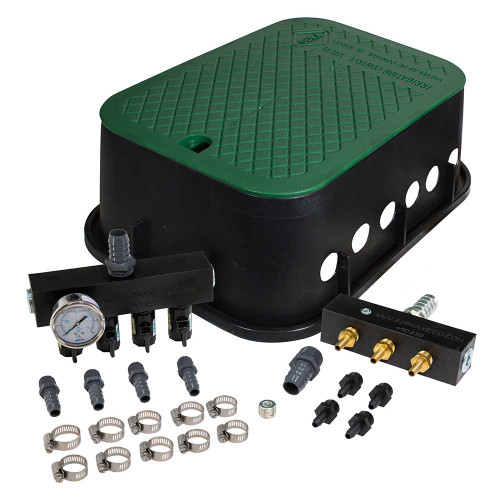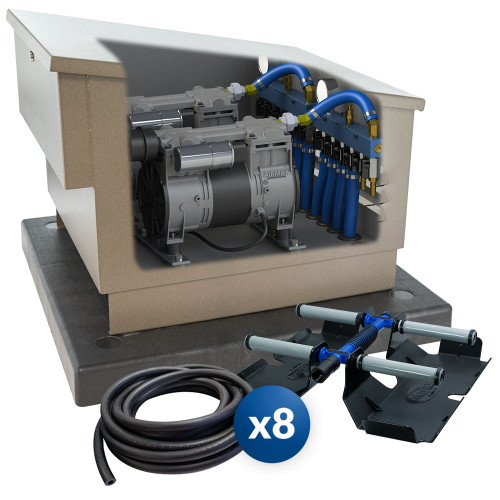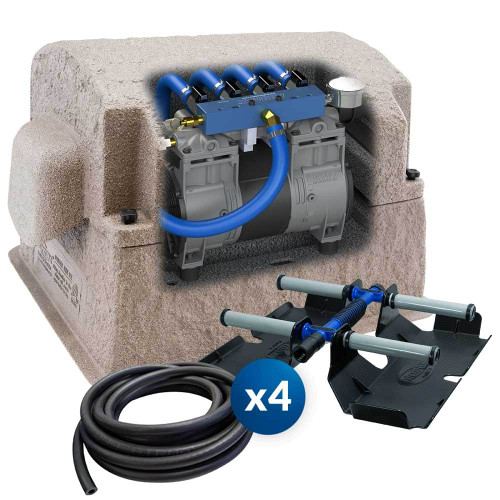
All About Diffused Aeration
Breathe Life Into Your Pond
Five Reasons to Aerate

Aeration Reduces Pond Muck
Not only is muck unpleasant to see or feel between your toes, but it can also give your pond a bad odor and provide habitat for leeches. Aeration combats muck and by increasing the dissolved oxygen and circulating the water, encouraging the colonization of beneficial aerobic bacteria that can consume, reduce and prevent muck build-up.

Aeration Improves Water Quality
Muck accumulates not only in the bottom of the pond but can also be suspended throughout the water body giving your pond a murky appearance. By reducing muck and excess nutrients, increasing oxygen, and circulating the water, you will improve your water quality and clarity.

Aeration Boosts Dissolved Oxygen
Without oxygen, your pond will go into an anaerobic state. Anaerobic bacteria are not as efficient at breaking down organic material as their aerobic counterparts and produce gas, giving the pond a rotten egg smell. Incorporating aeration into the pond increases the amount of dissolved oxygen in the water, keeping your pond functioning as an aerobic system.

Aeration Eliminates the Thermocline
Aeration circulates and mixes water to eliminate stratified layers of warmer, surface water and the colder, deeper water, to create an oxygen rich environment throughout your pond.

Aeration Protects Fish
Harmful gas is often trapped under ice when your pond freezes or is brought up from your pond's bottom during spring and fall turnover. If enough oxygen is displaced your fish will suffocate. Aeration assists in the release of gas leaving more oxygen available for your fish.

























